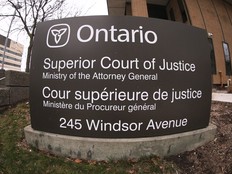Israel strikes Iran's nuclear sites and kills its top generals. Iran retaliates with missile barrage

Article content
DUBAI, United Arab Emirates — Israel launched blistering attacks on the heart of Iran’s nuclear and military structure Friday, deploying warplanes and drones previously smuggled into the country to assault key facilities and kill top generals and scientists — a barrage it said was necessary before its adversary got any closer to building an atomic weapon.
Iran retaliated late Friday by unleashing scores of ballistic missiles on Israel, where explosions flared in the skies over Jerusalem and Tel Aviv and shook the buildings below.
In a second round of attacks, sirens and explosions, possibly from Israeli interceptors, could be heard booming in the sky over Jerusalem early Saturday. The Israeli military urged civilians, already rattled by the earlier wave of missiles, to head to shelter.
New wave of Iranian missiles launched
The Iranian outlet Nour News, which has close links with the paramilitary Revolutionary Guard, said a wave was being launched. Associated Press journalists in Tel Aviv could see at least two Iranian missiles hit the ground, but there was no immediate word of casualties.
A hospital in Tel Aviv treated seven people wounded in the second Iranian barrage; all but one of them had light injuries. Israel’s Fire and Rescue Services said they were injured when a projectile hit a building in the city
Meanwhile, the sound of explosions and Iranian air defence systems firing at targets echoed across central Tehran shortly after midnight on Saturday, and an Associated Press reporter could hear air raid sirens near their home.
Iran’s semi-official Tasnim news agency is reporting a fire at Tehran’s Mehrabad International Airport, with a video posted on X of a column of smoke and orange flames rising from what the outlet said was the airport.
Iran’s Supreme Leader Ayatollah Ali Khamenei said in a recorded message Friday: “We will not allow them to escape safely from this great crime they committed.” Iran’s U.N. ambassador said 78 people were killed and more than 320 wounded in Israeli attacks.
Israel’s paramedic services said 34 people were wounded in the barrage on the Tel Aviv area, including a woman who was critically injured after being trapped under rubble. In Ramat Gan, east of Tel Aviv, an Associated Press journalist saw burned out cars and at least three damaged houses, including one where the front was nearly entirely torn away.
U.S. ground-based air defence systems in the region were helping to shoot down Iranian missiles, said a U.S. official who spoke on condition of anonymity to discuss the measures.
Israel’s ongoing airstrikes and intelligence operation and Iran’s retaliation raised concerns about all-out war between the countries and propelled the region, already on edge, into even greater upheaval.
Israel had long threatened such a strike, and successive American administrations sought to prevent it, fearing it would ignite a wider conflict across the Middle East and possibly be ineffective at destroying Iran’s dispersed and hardened nuclear program.
But a confluence of developments triggered by Hamas’ Oct. 7, 2023, attack — plus the reelection of U.S. President Donald Trump — created the conditions that allowed Israel to finally follow through on its threats. Israeli Prime Minister Benjamin Netanyahu said the U.S. was informed in advance of the attack.
On Thursday, Iran had been censured by the U.N.’s atomic watchdog for not complying with obligations meant to prevent it from developing a nuclear weapon.
Countries in region condemn Israel’s attack
Countries in the region condemned Israel’s attack, while leaders around the globe called for immediate deescalation from both sides.
The U.N. Security Council held an emergency meeting Friday afternoon at Iran’s request. In a letter to the council, Iran’s Foreign Minister Abbas Araghchi called the killing of its officials and scientists “state terrorism” and affirmed his country’s right to self-defence.
Israel’s military said about 200 aircraft were involved in the initial attack on about 100 targets. Its Mossad spy agency positioned explosive drones and precision weapons inside Iran ahead of time, and used them to target Iranian air defences and missile launchers near Tehran, according to two security officials who spoke on condition of anonymity.
It was not possible to independently confirm the officials’ claims.
Among the key sites Israel attacked was Iran’s main nuclear enrichment facility in Natanz, where black smoke could be seen rising into the air. It also appeared to strike a second, smaller nuclear enrichment facility in Fordo, about 100 kilometres (60 miles) southeast of Tehran, according to an Iranian news outlet close to the government that reported hearing explosions nearby.
Israel said it struck a nuclear research facility in Isfahan, too, and said it destroyed dozens of radar installations and surface-to-air missile launchers in western Iran. Iran confirmed the strike at Isfahan.
Israel military spokesman Brig. Gen. Effie Defrin said the Natanz facility was “significantly damaged” and that the operation was “still in the beginning.”
Above-ground section of Natanz facility destroyed
U.N. nuclear chief Rafael Grossi told the Security Council that the above-ground section of the Natanz facility was destroyed. He said all the electrical infrastructure and emergency power generators were destroyed, as well as a section of the facility where uranium was enriched up to 60%.
The main centrifuge facility underground did not appear to have been hit, but the loss of power could have damaged the infrastructure there, he said.
The first wave of strikes had given Israel “significant freedom of movement” in Iran’s skies, clearing the way for further attacks, according to an Israeli military official who spoke on condition of anonymity because he was not authorized to discuss details of the attack with the media.
The official said Israel is prepared for an operation that could last up to two weeks, but that there was no firm timeline.
Among those killed were three of Iran’s top military leaders: one who oversaw the entire armed forces, Gen. Mohammad Bagheri; one who led the paramilitary Revolutionary Guard, Gen. Hossein Salami; and the head of the Guard’s ballistic missile program, Gen. Amir Ali Hajizadeh.
Iran confirmed all three deaths, significant blows its governing theocracy that will complicate efforts to retaliate. Khamenei said other top military officials and scientists were also killed.
Netanyahu said the attack had been months in the making. In a video statement sent to journalists Friday, he said he ordered plans for the attack last November, soon after the killing of Hassan Nasrallah, the leader of Hezbollah in Lebanon, one of Iran’s strongest proxies. Netanyahu said the attack was planned for April but was postponed.
In its first response Friday, Iran fired more than 100 drones at Israel. Israel said the drones were being intercepted outside its airspace, and it was not immediately clear whether any got through.
Israel’s military said it called up reservists and began stationing troops throughout the country as it braced for further retaliation from Iran or Iranian proxy groups.
Trump urged Iran on Friday to reach a deal with the U.S. on its nuclear program, warning on his Truth Social platform that Israel’s attacks “will only get worse.”
“Iran must make a deal, before there is nothing left, and save what was once known as the Iranian Empire,” he wrote.
On Wednesday, the U.S. pulled some American diplomats from Iraq’s capital and offered voluntary evacuations for the families of U.S. troops in the wider Middle East. On Friday, the U.S. began shifting military resources in the region, including ships, as Israel prepared for more retaliation, two U.S. officials said, speaking on condition of anonymity.
Officials in Washington had cautioned Israel against an attack earlier in the week, so as not to disrupt U.S. negotiations with Iran over its nuclear enrichment program. They stressed Friday that the U.S. had not been involved in the attack, and warned against any retaliation targeting U.S. interests or personnel.
Israel calls attacks preemptive strikes on Iran’s nuclear program
Israeli leaders cast the attack as necessary to head off an imminent threat that Iran would build nuclear bombs, though it remains unclear how close the country is to achieving that or whether Iran had actually been planning a strike. Iran maintains its nuclear program is for civilian purposes only.
“This is a clear and present danger to Israel’s very survival,” Netanyahu claimed as he vowed to pursue the attack for as long as necessary to “remove this threat.”
Israel is widely believed to be the only nuclear-armed state in the Middle East but has never acknowledged having such weapons.
Over the past year, Israel has been targeting Iran’s air defences, hitting a radar system for a Russian-made air defence battery in April 2024 and surface-to-air missile sites and missile manufacturing facilities in October.
Iran says Israel targeted residential areas
For Netanyahu, the operation distracts attention from Israel’s ongoing and increasingly devastating war in Gaza, which is now over 20 months old.
There is a broad consensus in the Israeli public that Iran is a major threat. But if Iranian reprisals cause heavy Israeli casualties or major disruptions to daily life, public opinion could shift quickly.
The Iran-backed Lebanese militant group Hezbollah issued a statement that offered condolences and condemned the attack, but did not threaten to join Iran in its retaliation. Hezbollah’s latest war with Israel — which killed much of the group’s senior leadership — ended with a U.S.-brokered ceasefire in November.
Khamenei, the Iranian supreme leader, said in a statement that Israel “opened its wicked and blood-stained hand to a crime in our beloved country, revealing its malicious nature more than ever by striking residential centres.”
Netanyahu expressed hope the attacks would trigger the downfall of Iran’s theocracy, saying his message to the Iranian people was that the fight was not with them, but with the “brutal dictatorship that has oppressed you for 46 years.”
— Lidman and Frankel reported from Jerusalem. Associated Press writers Nasser Karimi, Amir Vahdat and Mehdi Fattahi in Tehran, Iran; Melanie Lidman and Sam Mednick in Tel Aviv, Israel; Josef Federman in Jerusalem, Israel; Lolita C. Baldor, Tara Copp, Matthew Lee and Eric Tucker in Washington; Bassem Mroue and Abby Sewell in Beirut; Edith Lederer at the United Nations and David Rising in Bangkok contributed to this report.













Postmedia is committed to maintaining a lively but civil forum for discussion. Please keep comments relevant and respectful. Comments may take up to an hour to appear on the site. You will receive an email if there is a reply to your comment, an update to a thread you follow or if a user you follow comments. Visit our Community Guidelines for more information.